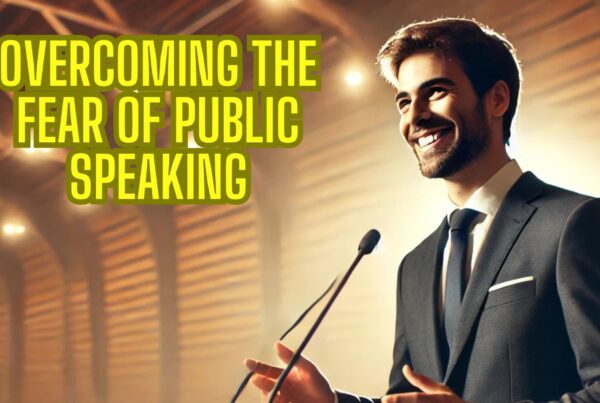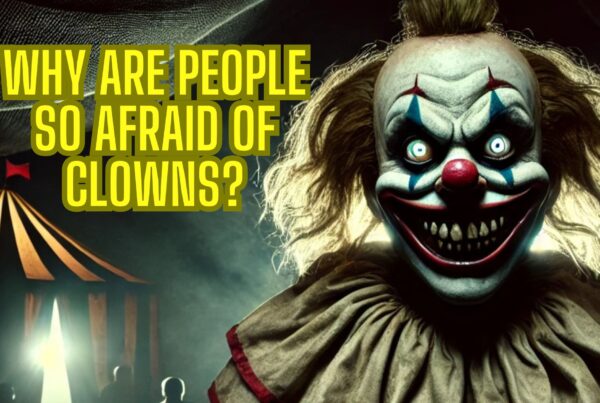The Ultimate Guide to the Phobia of Halloween and Related Fears
Introduction to the Phobia of Halloween
Halloween, with its vibrant yet eerie ambiance, is a beloved celebration for many. But for others, it can evoke intense anxiety and dread. Known as samhainophobia, the fear of Halloween is not as rare as one might think. Rooted in ancient customs, modern-day symbolism, and often personal experiences, samhainophobia and related phobias can significantly impact one’s enjoyment of the holiday. Let’s dive into what makes Halloween so uniquely fear-inducing and explore ways to manage and overcome this phobia.
Understanding Samhainophobia: The Basics
Samhainophobia is more than a mere discomfort with spooky decorations; it’s a persistent, irrational fear of Halloween that can hinder day-to-day life. This phobia often encompasses a broad spectrum of associated fears, from terror of ghostly apparitions to unease around eerie costumes. Although not officially classified in diagnostic manuals, samhainophobia can meet the criteria for a specific phobia, leading to symptoms like panic attacks, avoidance, and even social isolation.
The Origins of Halloween and Samhainophobia
Halloween’s origins trace back to the Celtic festival of Samhain, celebrated over 2,000 years ago as a time when the boundary between the living and dead was thin. The Celts believed that on October 31, spirits roamed freely among the living. To ward off malevolent spirits, people would don animal skins, light bonfires, and perform various rituals. Modern Halloween traditions still echo this sense of the supernatural, often intensifying fears for those with phobias related to ghosts, the dark, or the unknown.
Why Halloween is a Common Trigger for Phobias
The visual elements and psychological themes of Halloween—ghosts, witches, monsters—are deeply rooted in societal symbols of fear. For someone with samhainophobia, these visual and sensory triggers are intensified by the holiday’s intentional suspense and horror-focused atmosphere. Fear of unexpected scares, loud noises, or unsettling sights like animatronics can make Halloween overwhelming.
Causes of Samhainophobia: A Deep Dive
The roots of Halloween phobia vary, often stemming from a combination of genetics, traumatic events, and societal influences. Here are some common contributing factors:
- Genetic Predisposition: Family history of anxiety or phobic disorders can make someone more susceptible to specific phobias.
- Traumatic Experiences: For some, a frightening encounter during Halloween, especially at a young age, leaves a lasting impact.
- Psychological Influence of Media: Horror movies, spooky tales, and even Halloween-themed marketing create a cultural backdrop that can amplify fears.
Related Phobias Associated with Halloween
Halloween can be particularly challenging for people with other specific phobias. Here’s a look at common phobias tied to Halloween:
- Phasmophobia (Fear of Ghosts): Triggered by Halloween’s ghostly symbols and decorations.
- Wiccaphobia (Fear of Witches): Often triggered by costumes, stories, and decorations.
- Kinemortophobia (Fear of Zombies): For some, images of the undead are especially terrifying.
- Arachnophobia (Fear of Spiders): Cobwebs and spiders are often associated with halloween and used as decorations.
- Masklophobia (Fear of Masks): This phobia makes masked costumes and decorations feel suffocating or eerie.
Phobias Triggered by Halloween Symbols
For those with fears associated with blood, gore, or loud noises, Halloween can be especially tough. Haunted houses, horror films, and even themed parties bring these fears to life in vivid detail. Decorations like fake blood, horror sound effects, and tombstone replicas can all serve as triggers for people with these types of phobias.
Symptoms of Samhainophobia
Symptoms of samhainophobia can vary in severity but often include:
- Physical Responses: Sweating, shaking, nausea, and a racing heart.
- Mental Symptoms: Feeling dread, panic, or a strong need to avoid Halloween-related situations.
- Behavioral Patterns: Avoiding social gatherings, Halloween-themed shops, and decorations.
Coping Mechanisms for Mild Halloween Anxiety
For those experiencing mild Halloween-related anxiety, several strategies can help:
- Visualisation: Imagine a scenario where you navigate Halloween events calmly.
- Mindful Breathing: Practice breathing exercises to reduce stress.
- Bring a Supportive Companion: Attending events with a trusted friend can lower anxiety levels.
Therapeutic Approaches to Samhainophobia
If Halloween fears become overwhelming, seeking professional help can make a difference. There are several forms of treatment that can be useful in assisting someone to shake off an old phobia including hypnotherapy and NLP approaches. These methods allow individuals to confront their fears and develop coping mechanisms that help them manage their anxiety.
FAQs on the Phobia of Halloween
- What is samhainophobia?
- Samhainophobia is an intense, often irrational fear of Halloween and its associated elements.
- How common is the fear of Halloween?
- Many people report heightened anxiety or fear around Halloween themes, especially those with related phobias.
- Can samhainophobia be treated?
- Yes, treatments like cognitive behavioral therapy and exposure therapy have proven effective in managing samhainophobia.
- What are some non-scary ways to celebrate Halloween?
- Fall festivals, costume-free gatherings, and community events offer fun alternatives for those sensitive to traditional Halloween themes.
- What should I do if my child fears Halloween?
- Gradual exposure, focusing on fun activities, and validating their fears can help children manage their Halloween-related anxiety.
- Is the fear of Halloween linked to any other phobias?
- Yes, samhainophobia often overlaps with phobias related to ghosts, witches, masks, and the dark.
Embracing Halloween without Fear
Though Halloween can be daunting for those with samhainophobia, there are numerous ways to enjoy the season without succumbing to fear. Whether by seeking professional help, utilizing coping strategies, or opting for non-traditional celebrations, embracing Halloween can be a positive experience. Remember, facing fears—no matter how frightening—can be incredibly empowering.
Release Hypnosis Melbourne Hypnotherapy
Since 2015, Lawrence Akers has been working under the name Release Hypnosis offering Hypnotherapy and ACT based work to the people of Melbourne or an online service. Based on St Kilda Rd, Release Hypnosis is an easy and convenient location to get to and accessible by the ANZAC station train and tram stop. Release Hypnosis can help with a wide range of presenting issues, and I offer a free 30 minute no obligation discovery call for those who are unsure if hypnotherapy is the right way forward for them.
Book Your FREE 30 Minute Consultation With Release Hypnosis NOW!
You may also like to read:
Exploring Content-Free Hypnotherapy
The Journey to Becoming a Better Hypnotic Subject
Best Hypnotherapy Resources 2023: Release Hypnosis Top Blogs
What Is The Success Rate of Hypnosis?
Release Hypnosis Melbourne Hypnotherapy is accessible for people in: Abbotsford, Armadale, Albert Park, Balwyn, Bentleigh, Black Rock, Box Hill, Brighton, Brunswick, Bulleen, Bundoora, Camberwell, Canterbury, Carnegie, Caulfield, Chadstone, Cheltenham, Clayton, Coburg, Collingwood, Deer Park, Doncaster, Elsternwick, Eltham, Elwood, Epping, Essendon, Fairfield, Fitzroy, Footscray, Glen Iris, Glen Waverley, Glenhuntly, Greensborough, Hampton, Hawthorn, Heidelberg, Highet, Ivanhoe, Kew, Kooyong, Lalor, Laverton, Lower, Plenty, Macleod, Malvern, Middle Park, Moonee Ponds, Melbourne, Moorabbin, Mount Waverley, Murrumbeena, Northcote, Oakleigh, Ormond, Parkville, Pascoe Vale, Port Melbourne, Prahran, Preston, Richmond, Rosana, Sandringham, South Yarra, South Melbourne, Spotswood, St Albans, St Kilda, Surrey Hills, Templestowe, Thornbury, Toorak, Tullamarine, Williamstown, Yarraville, North Melbourne, Windsor, East Melbourne, Melbourne, Melbourne CBD, Melbourne 3004








